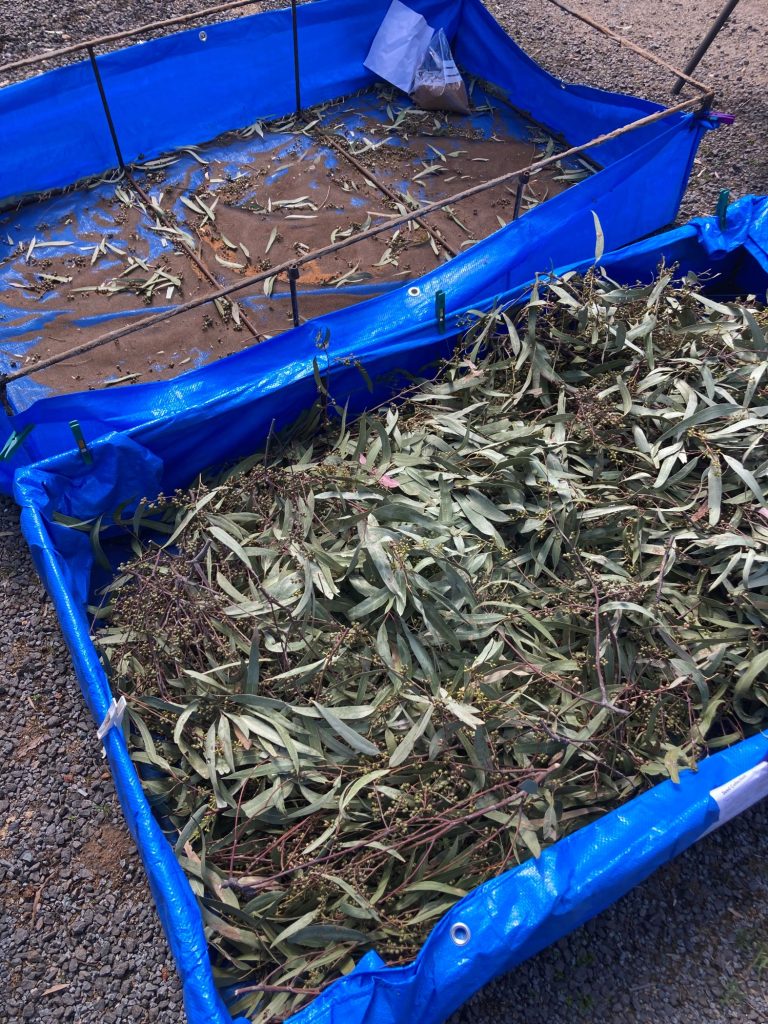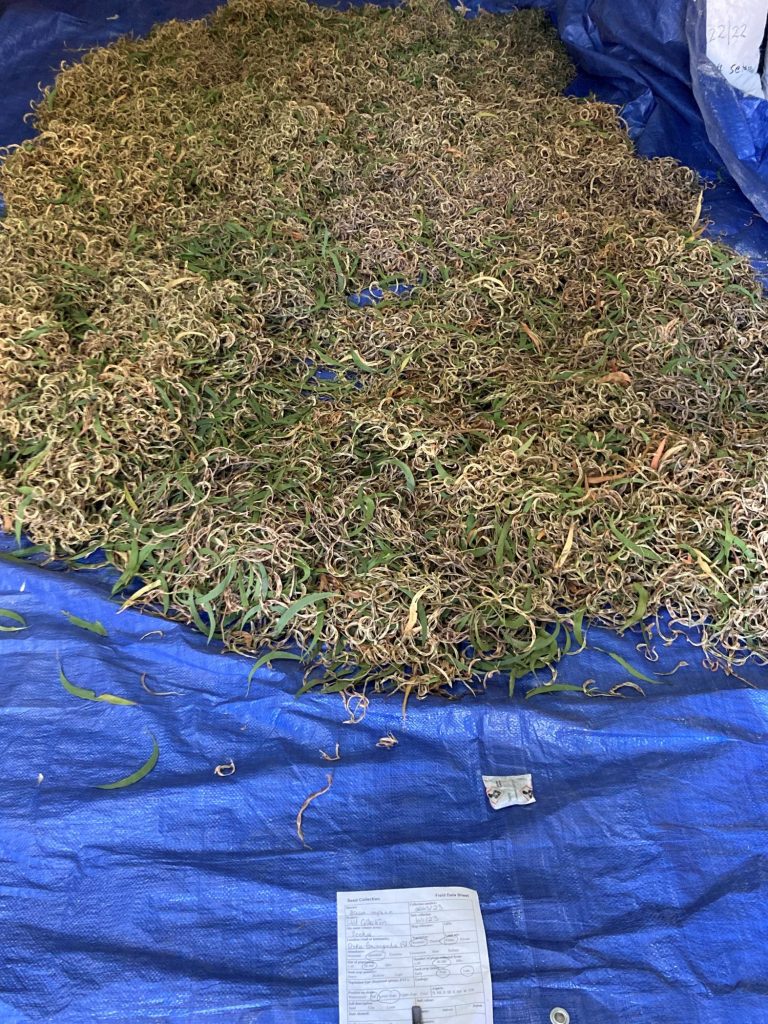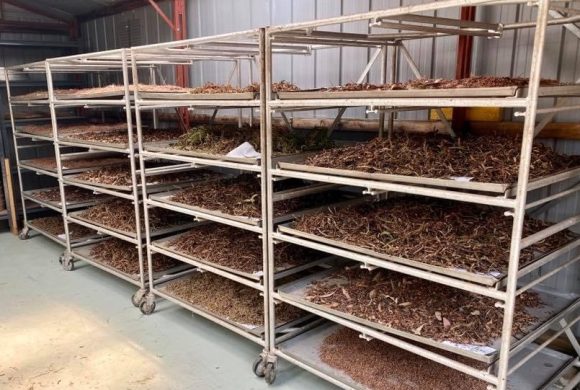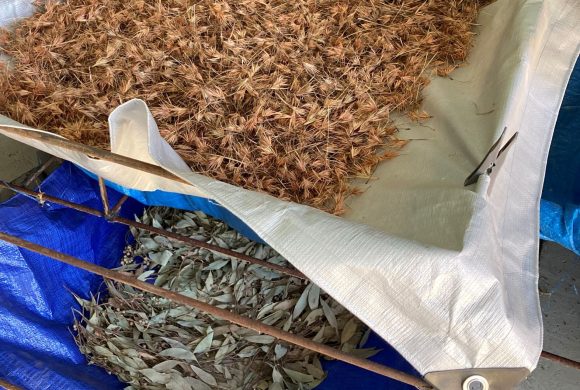Seed drying and cleaning
This involves removing the seed from it’s fruit. Freshly collected seed is particularly vulnerable to deterioration as it usually has a high moisture con
-tent and can go moldy. It is also prone to predation from insects brought in with the fruiting material from the field.


Natural drying
For large quantities, spread fruit out on tarpaulins in a dry area (direct sun is fine) and turn regularly to ensure even drying, and prevent moisture build-up (and mould growth). Pack the tarps away at night to avoid moisture problems and watch out for bad weather. Extract as soon as possible as seed is vulnerable to predation by insects including ants and mice/birds.


Cleaning methods
Plants with Woody fruits
(Eucalyptus, Allocasuarinas, Banksias, Callitris, Hakeas etc).
The seed will drop as the fruit dries out and the valves open (usually within a week). For casuarinas, remove all branchlets (needles) from the cones immediately following collection, as these are very difficult to remove once the seed has dropped. After the seed has dropped, we extract it by sieving.
Plants with pods
(Wattles, Pea-Flowers etc), or soft capsules (mat rushes).
Seed is easier to separate from brittle pods – so make sure pods are fully dry. Use gloves to rub pods and then sieves and winnowing to extract seed. The Seedbank has cleaners that can be used to clean wattle seed to a good standard.
Flotation is another method of achieving clean wattle seed. Immerse the material quickly in water and then skim off surface material (good seed sinks). Dry seed well before storing.
Seed Collection
- The GBIS mission is to provide genetically healthy seed to support landscape restoration activities.
- We strive for improving landscape health and resilience of biodiversity, especially in the face of climate change.
Seed Cleaning
- Once collected, seed is cleaned, batched and stored ready for use.
- There are many cleaning techniques for different species and is time consuming work to achieve the highest quality.
Seed Storage
- We provide quality, diverse and genetically healthy seed.
- Tests seed to ensure viability.
- Supplies and stores a diverse range of indigenous species for the catchment.
